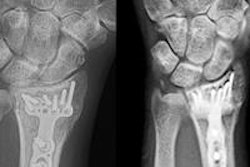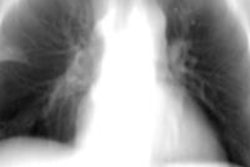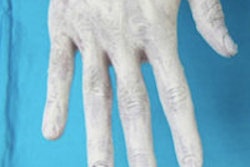"The array can provide the energy and flux needed for chest imaging," according to Otto Zhou, PhD, from the physics and astronomy department at the University of North Carolina at Chapel Hill. "The device can lead to a faster scanning speed compared to the current commercial technology."
In an interview with AuntMinnie.com, Zhou said the motivation for the project being presented at RSNA 2013 was to develop a digital tomosynthesis system with reduced imaging time, less motion blurring, and increased resolution compared with the current commercially available units.
"Chest tomosynthesis is a promising 3D imaging modality that offers significantly lower dose and comparable sensitivity compared with CT, when there is no patient motion," he said.
He and his colleagues built a benchtop chest tomosynthesis system using a carbon nanotube source array (XinRay Systems) and a flat-panel digital detector (Carestream Health). The source array contained 75 focal spots operating at 80 kVp and 5 mA anode current.
Projection images were reconstructed using commercial software (Real Time Tomography). System in-plane resolution and in-depth resolution were measured using a 100-micron cross-wire phantom at different source configurations, including linear-source geometry with different angular coverage and a square-source geometry. Also, anthropomorphic chest phantom images were acquired and reconstructed for image quality assessment.
The researchers expect to conduct patient and cadaver studies in the near future, he said.



















